"The REM sleep"
Zmicer Waynowski’s project “the Rem sleep” is a photographic document, a living testimony of the tragic and inspiring events taking place in Belarus “here and now”, research on the paradoxical phenomenon of peaceful non-violent protest of the people of Belarus. It is the Protest that becomes the main form of art, and it is the Street that becomes the country's main art stage. All of rethinking, reflecting and artistic expression will be made afterwards. Here and now, each of us is a participant, documentalist, and curator.
Like Josef Koudelka who made the whole world see the Prague Spring 1968, the author was “too close” to the event and managed to capture on film negatives all main plots of this obviously complicated and dramatic story revolving under the unprecedented pressure on independent and foreign journalism, on each person with a photocamera. Being part of protest, being with people, being in solidarity and unity is the author’s primary and main motive; a photographic document which is undoubtedly the author’s artistic statement is an unexpected and beautiful material which is, just like the Belaruisan peaceful protest, work is progress. The choice of the tool (film camera, black and white negative film) in the modern digital world is also to some extent a continuation of this paradoxical history of protest which has become the revolution of aesthetics above all.
We have found our own unique plot which has no analogues in history. The fight goes on.
In November 2020, Zmicer Waynowski was detained during the traditional weekly protest called Pensioners' March. He was convicted under the infamous administrative article 23.34, receiving 13 days of imprisonment, as a result.
This was the author's last shoot. After serving 13 days in prison, the author was subjected to further pressure and harassment and was forced to leave the country. He now lives in Lublin, Poland.
Alena Pratasevich, a curator
The 2020 presidential elections in Belarus were held with an incredible level of fraud, which led to massive street protests that lasted for over six months, and in one form or another, continue to the present.
The fearless and the insatiable thirst for changes of some and the almost hereditary fear of the new in others, created a collective street body, looking into which it is important for the photographer to discover the individual “body”. The poses, plasticity and "dialogues" of this body scare with their "academic", repeating in time, again and again, but also, attracting with a new rendition of the old.
For this reading, I picked up a camera from the 80s of the last century, inserted a black and white film, and came as close as I could get to the present.
I named my project “The REM sleep”.
Everything that’s happening in our society at the moment is like a paradoxical dream – like REM, the period during sleep characterized by increased brain activity.
One of the signs of this phase is the rapid movement of the eyeballs. When you look at them, you have a feeling that the sleeper sees something bright and colorful and is about to wake up, having fixed what he saw in his or her memory.
All this restless sleep, alternating with slow and fast phases, I attempted to document on film.
I do not know what society dreams about, which stages of sleep get repeated and which produce something new, but I know for a fact, that I want to be near in the moment when those eyes, full of either fear or fearlessness, would open.
Zmicer Waynowski, a photographer
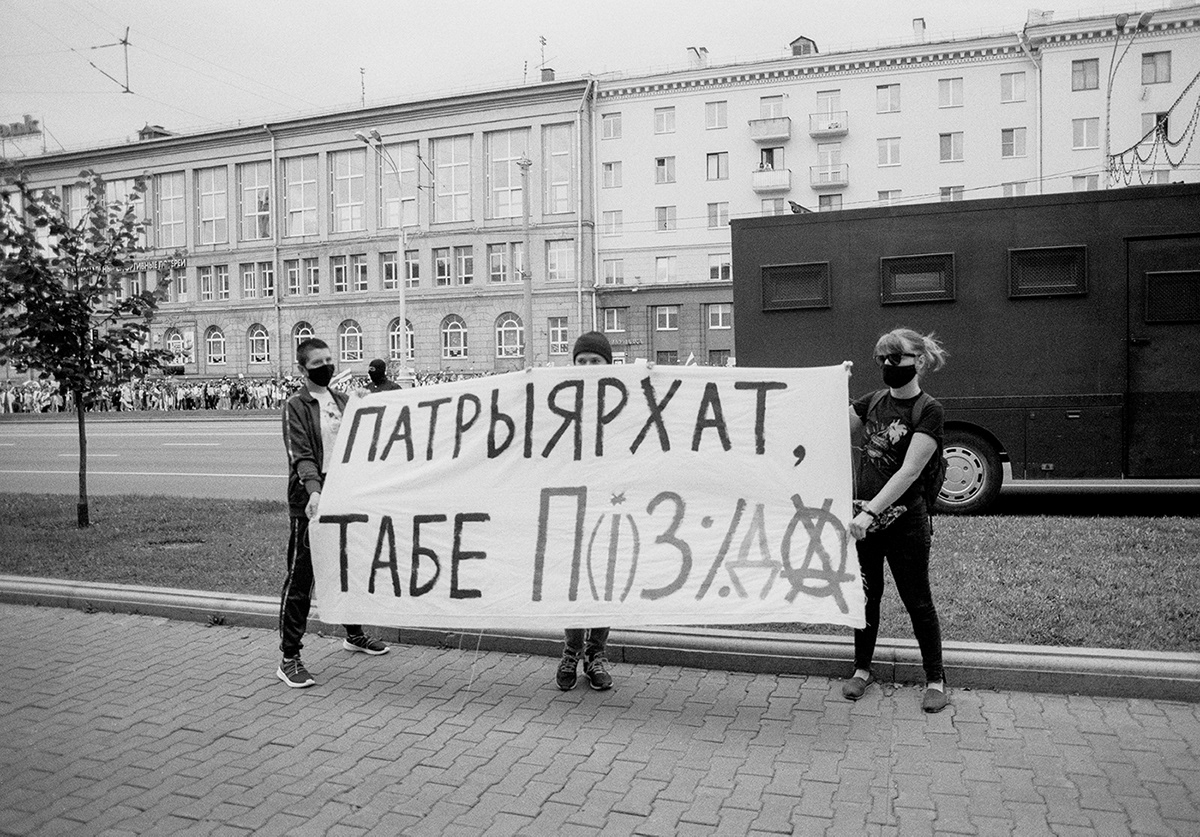
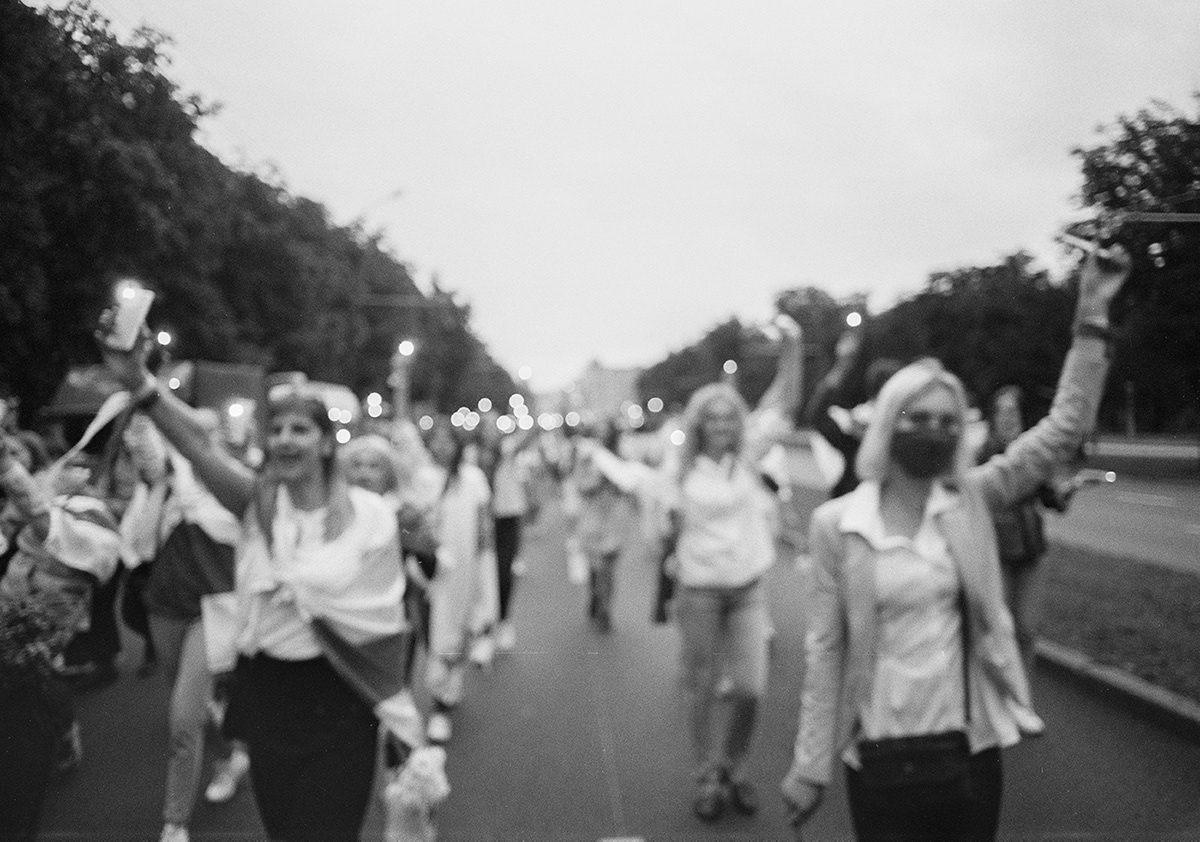
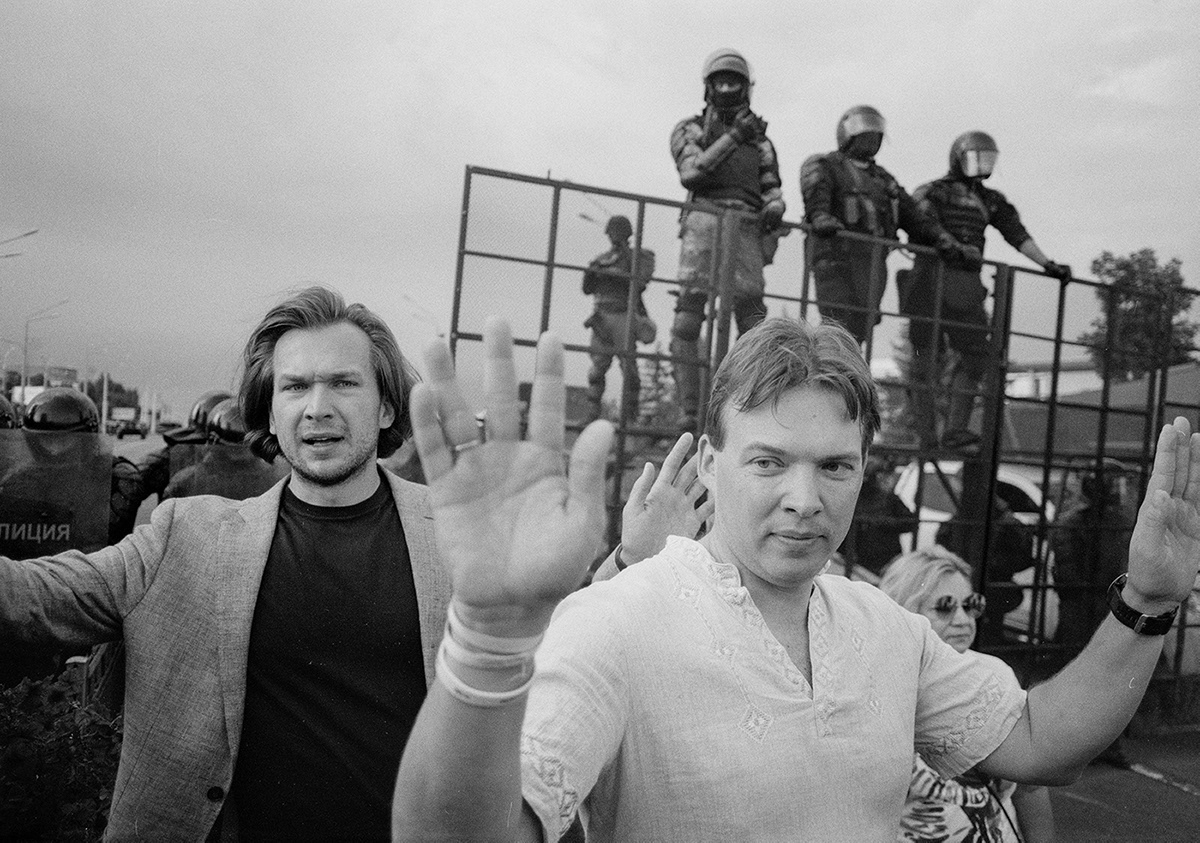
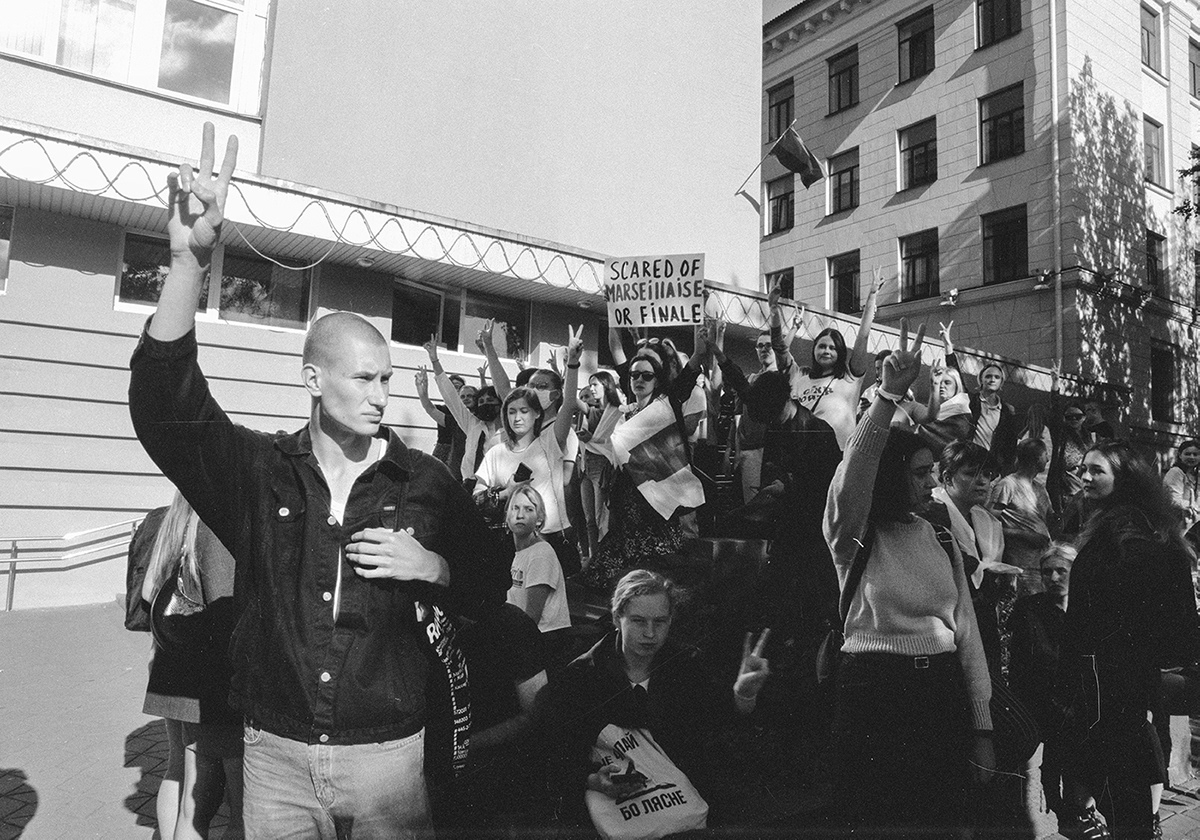
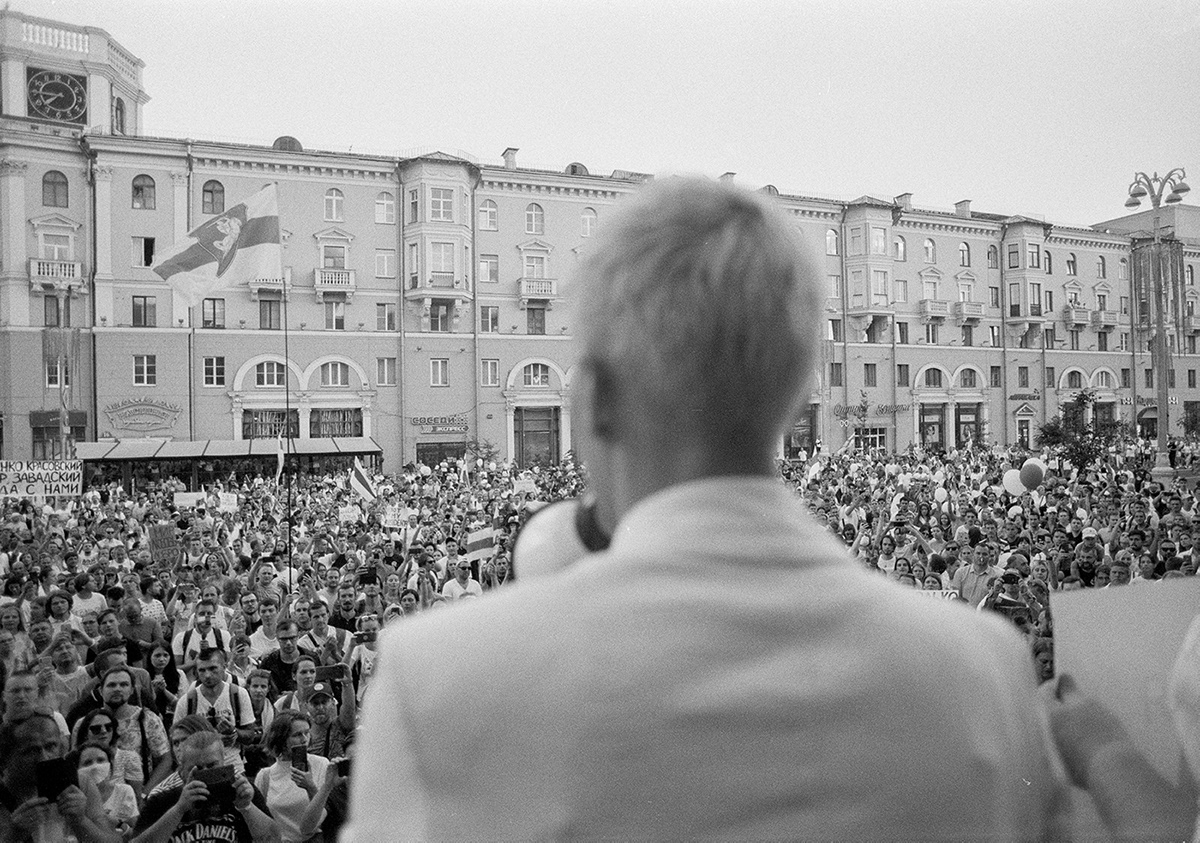


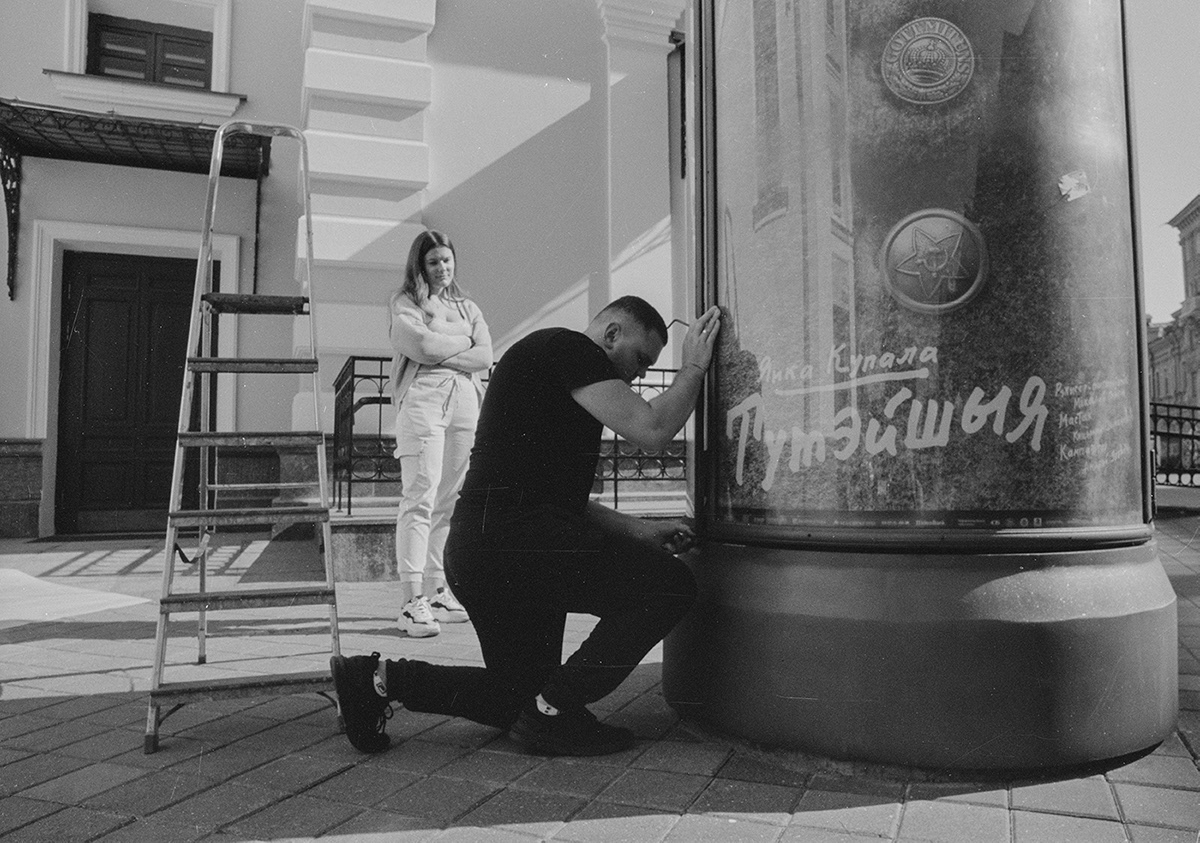
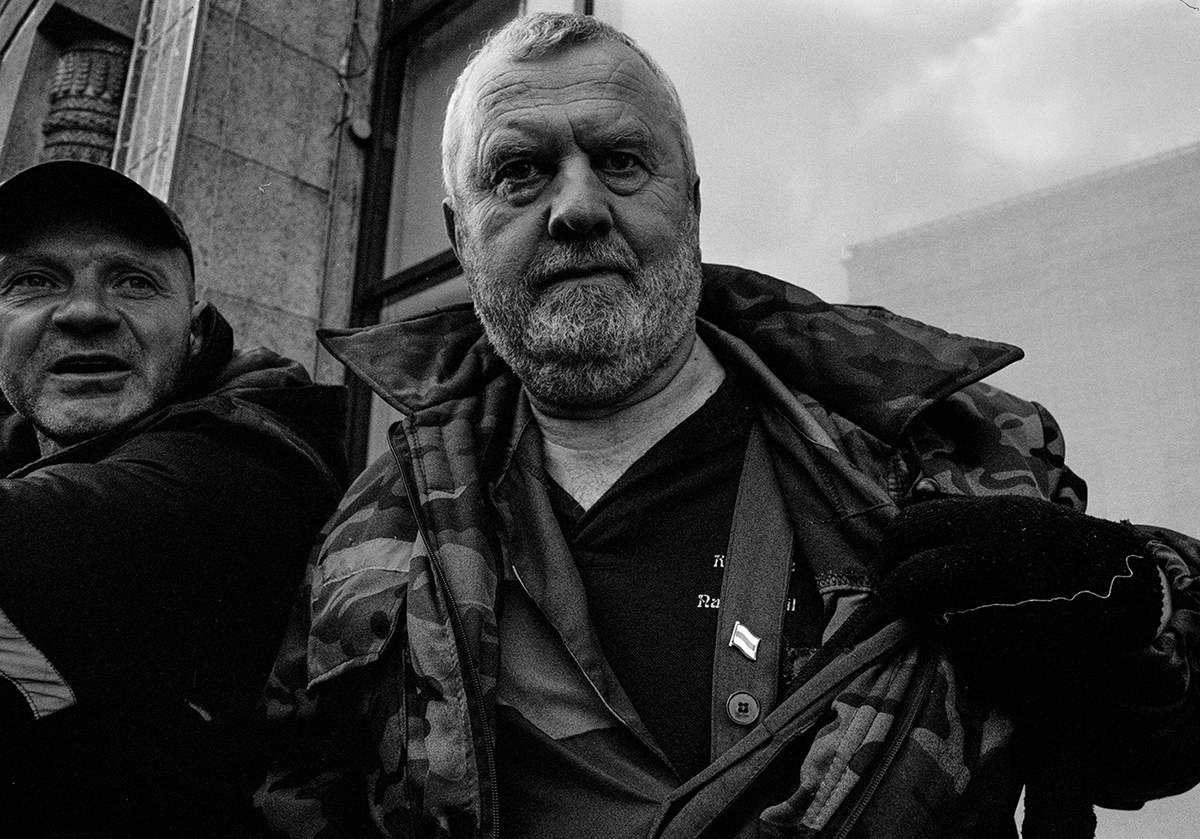
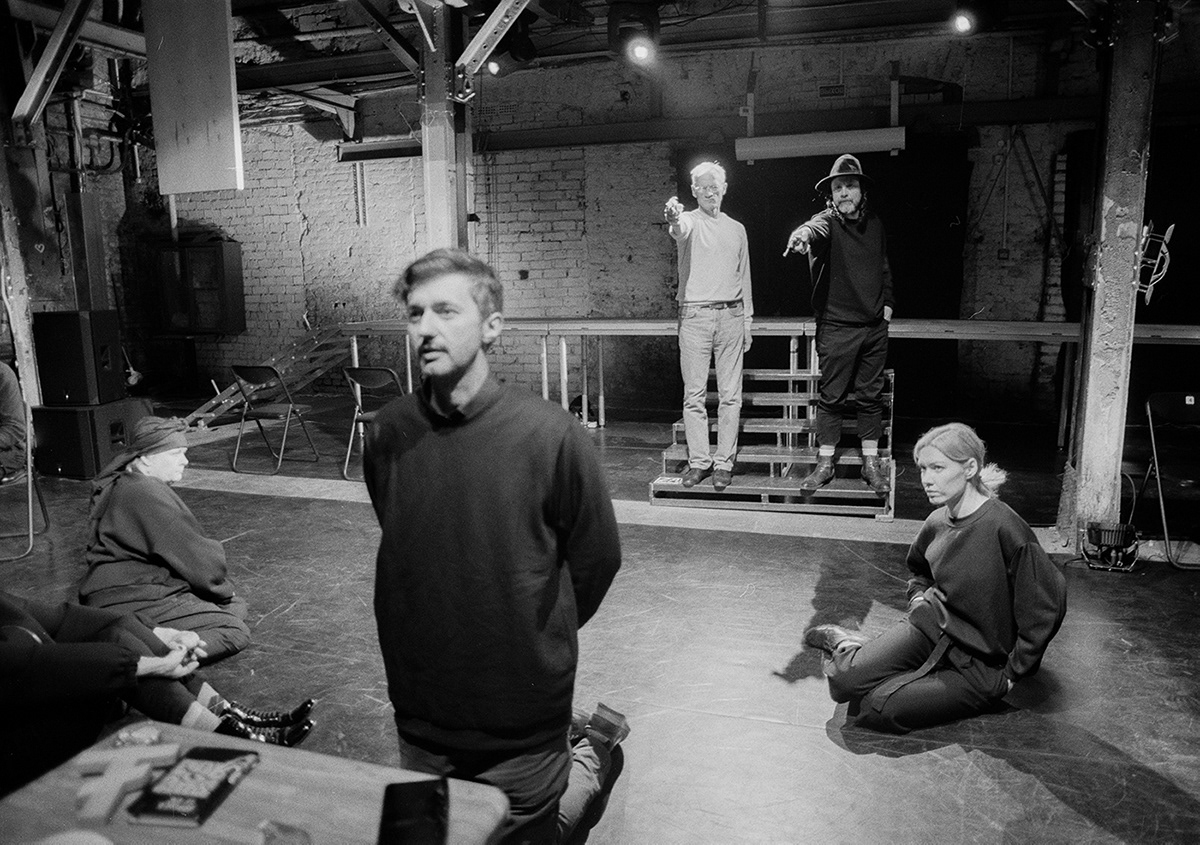
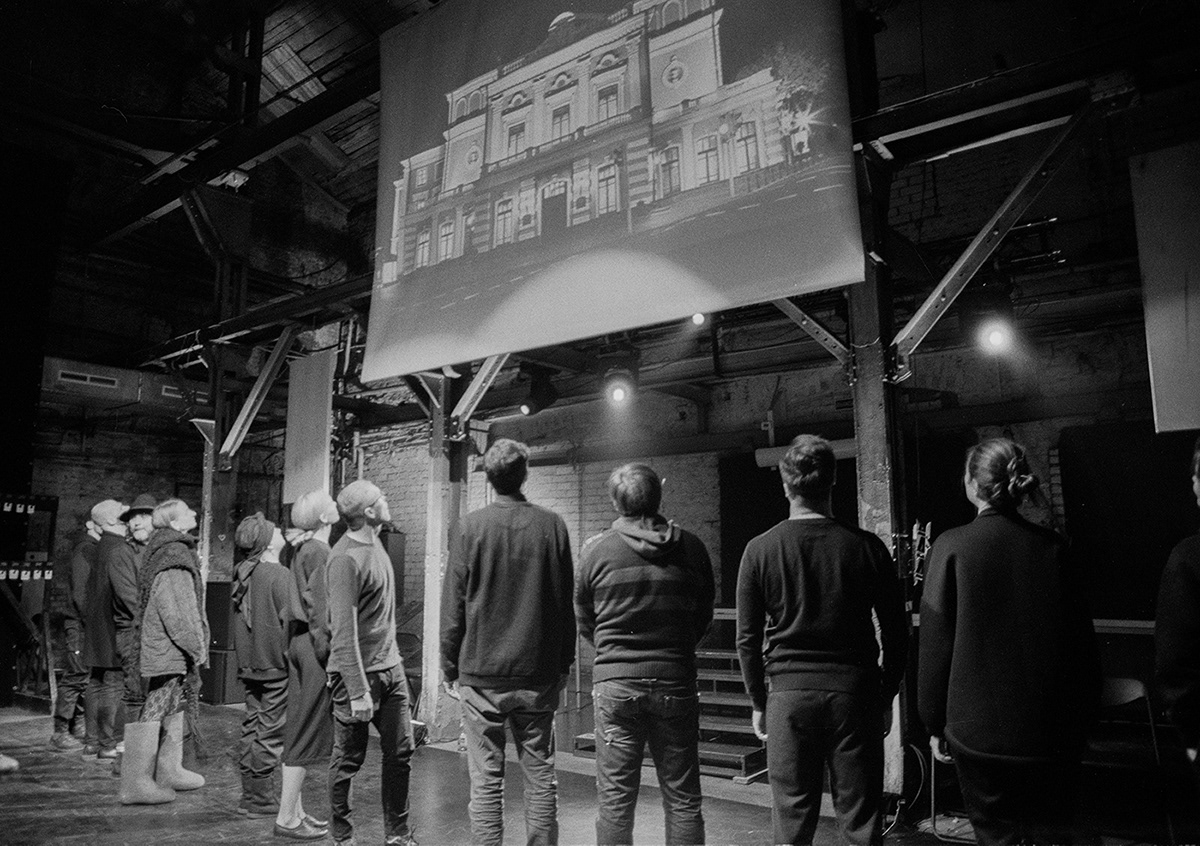
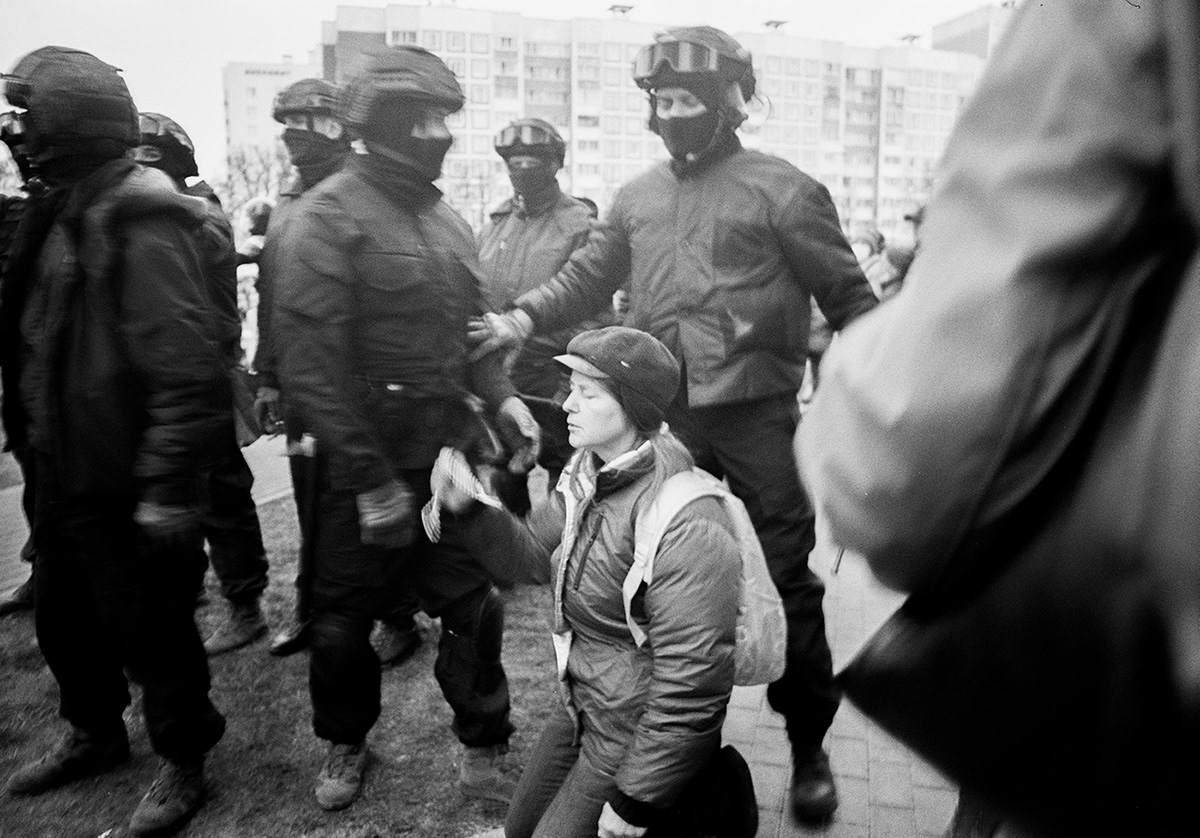

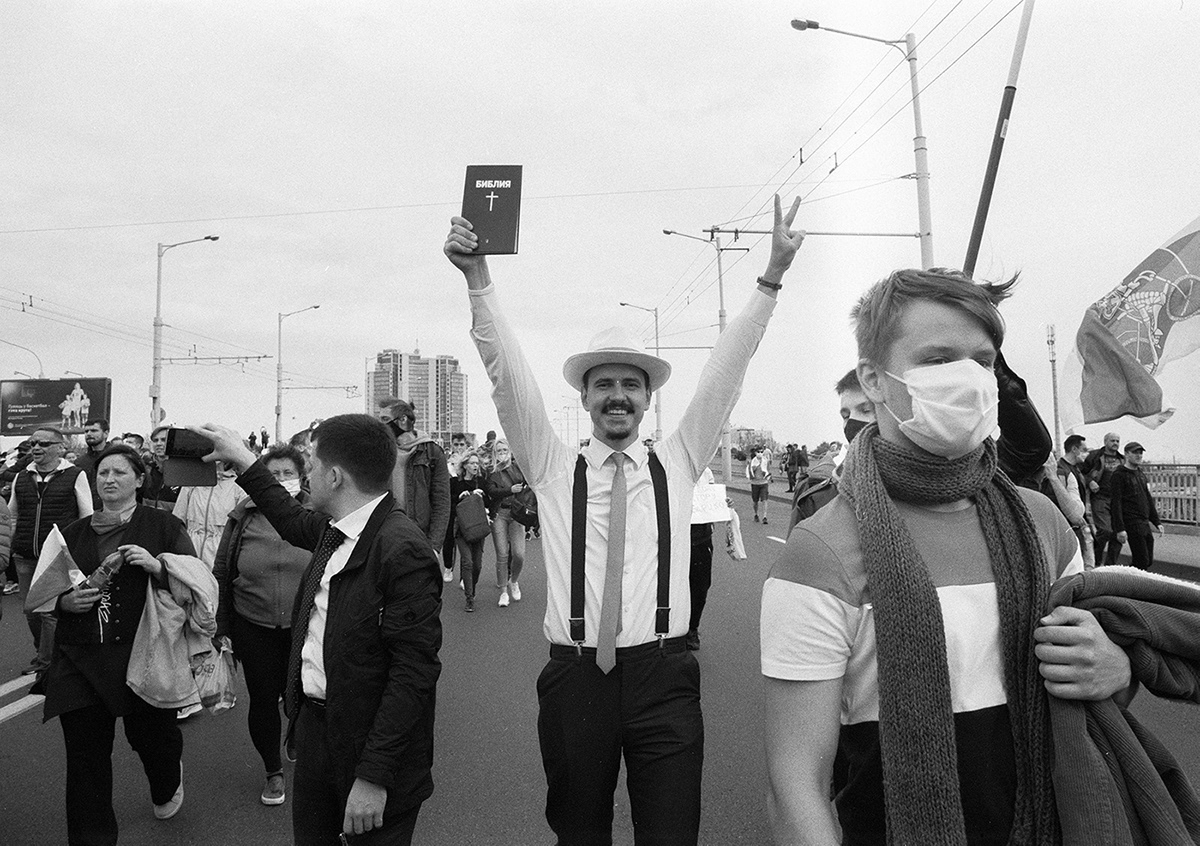
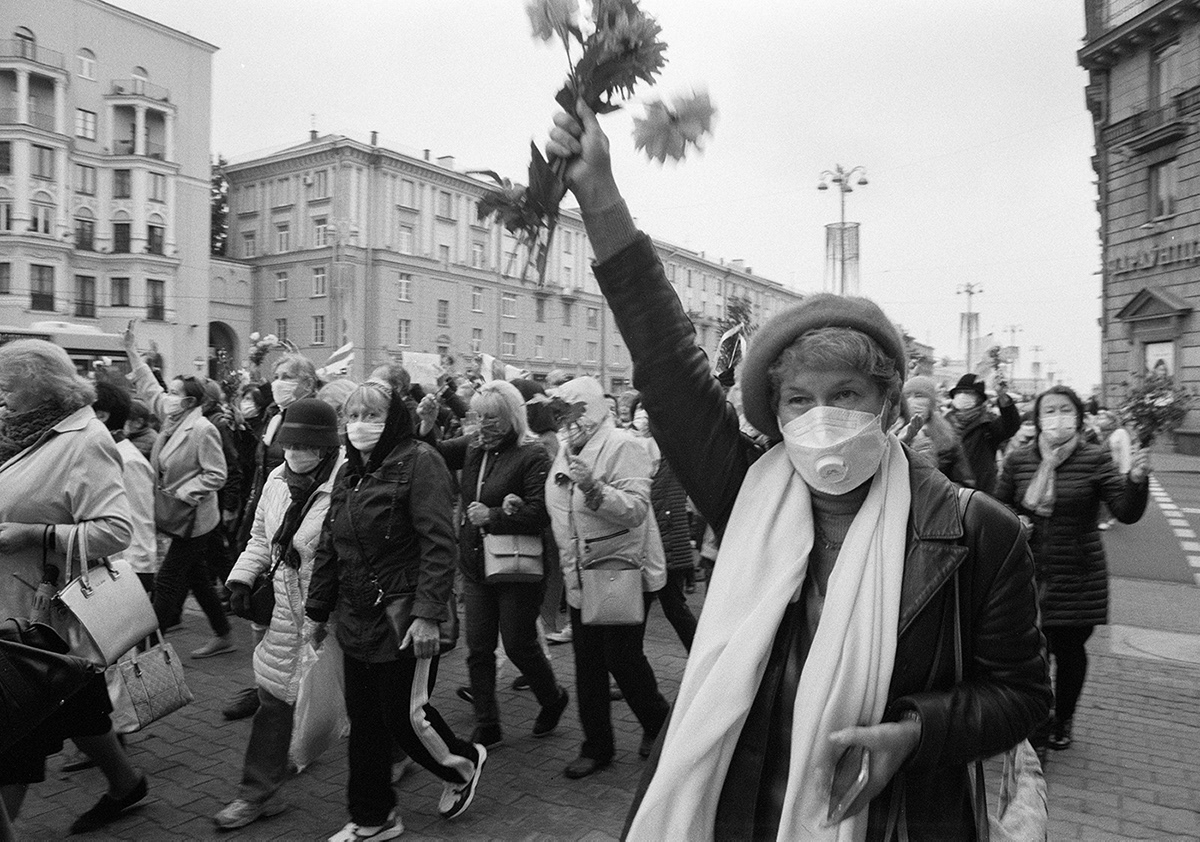
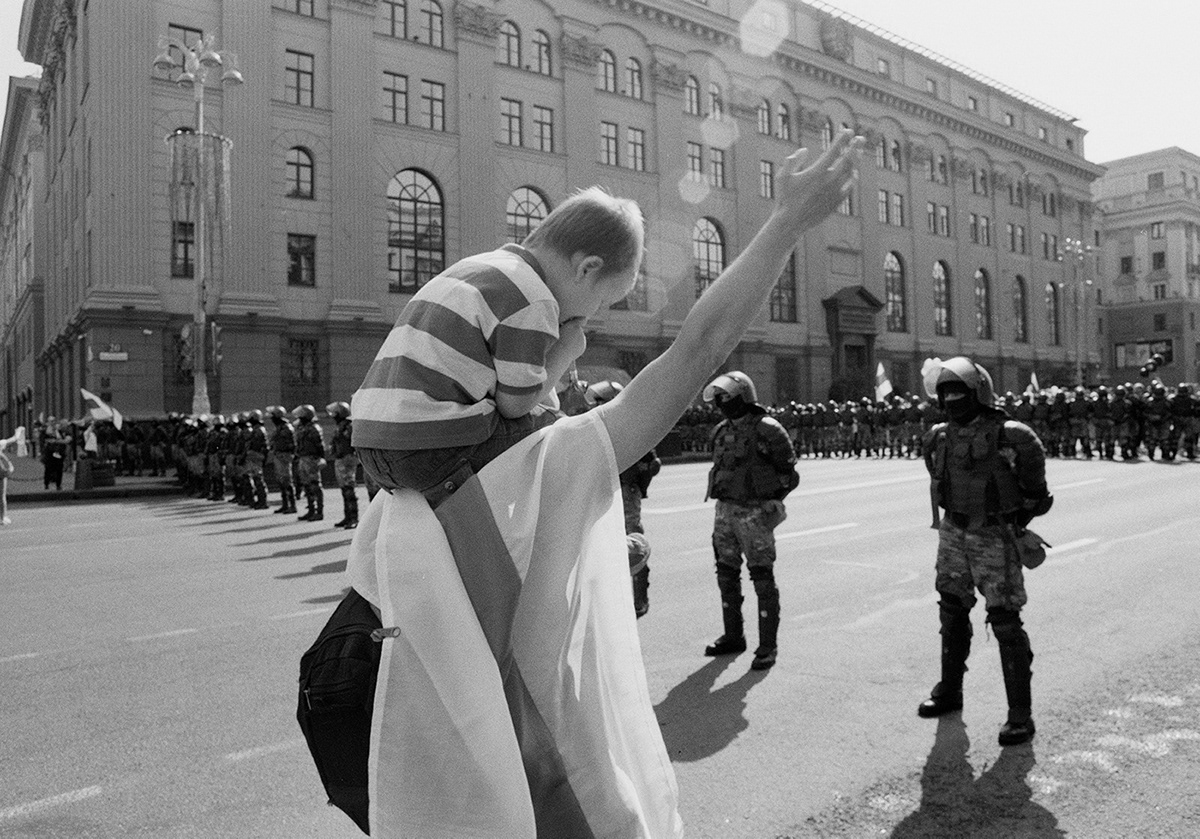
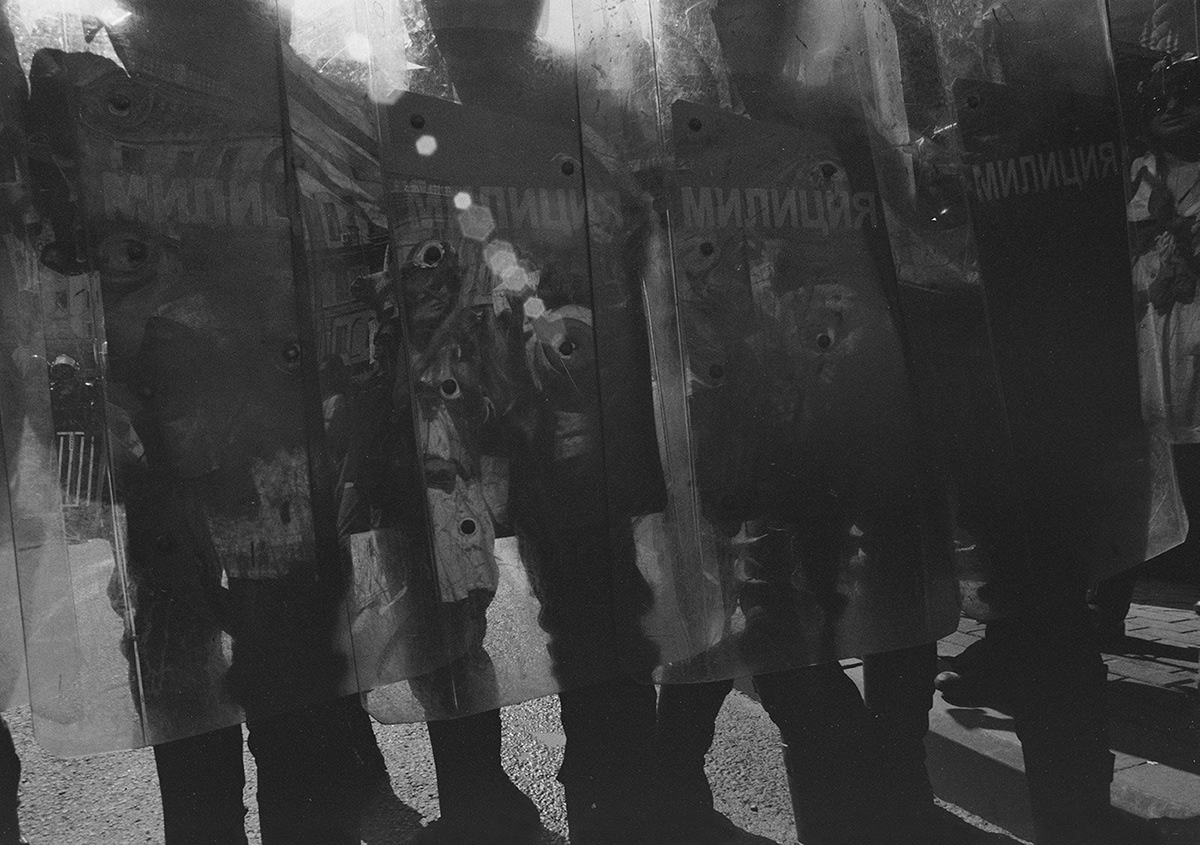
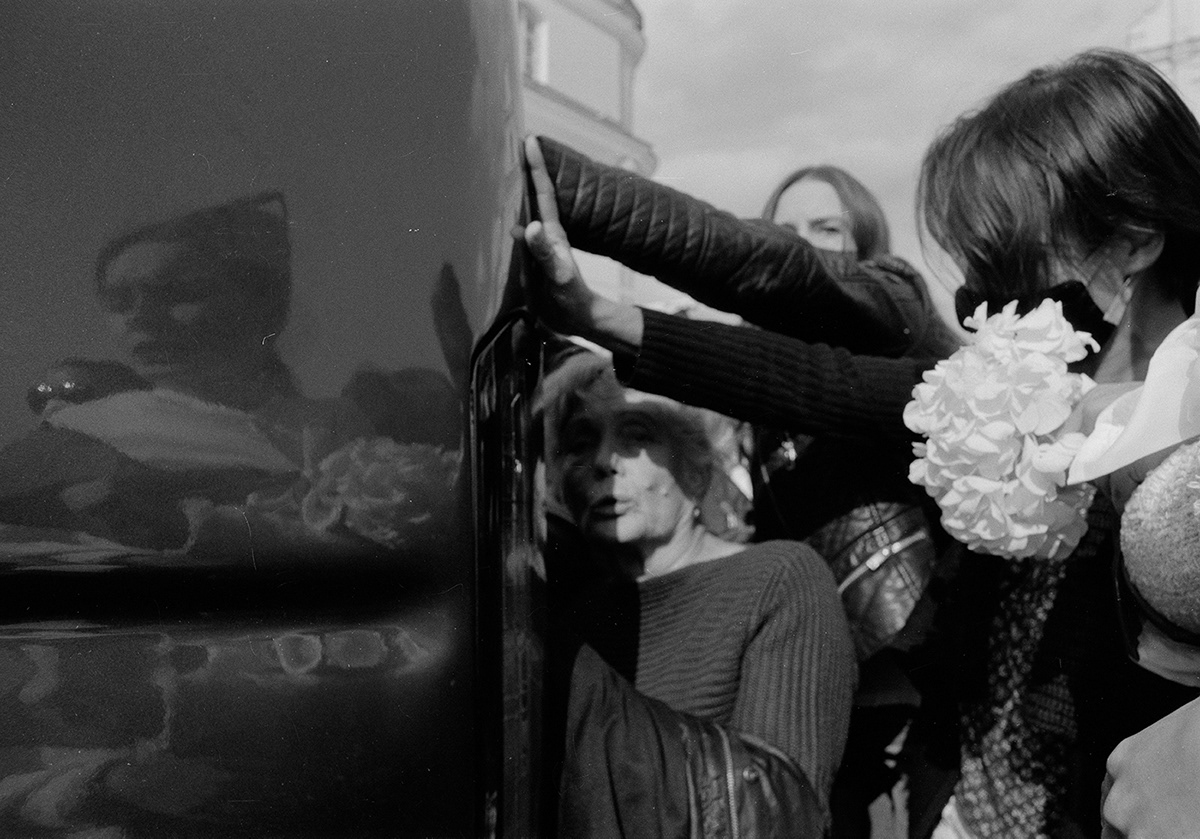
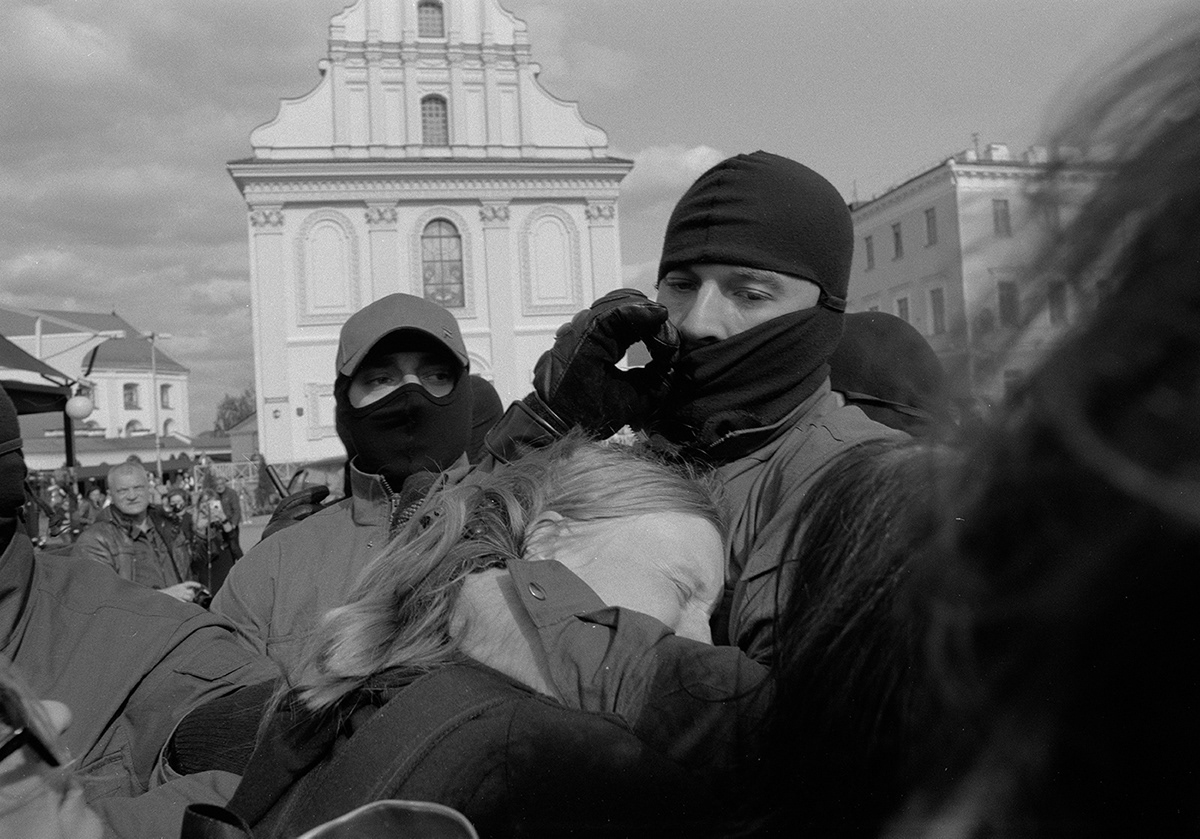
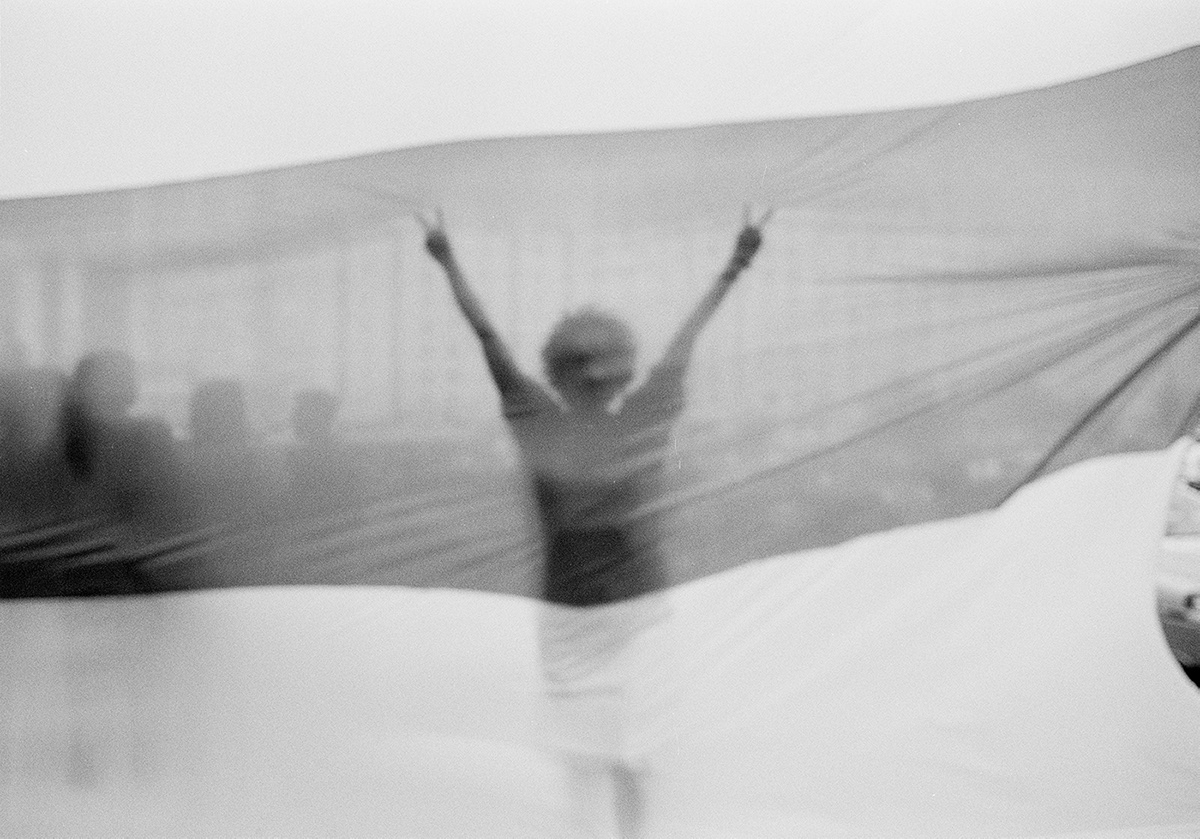

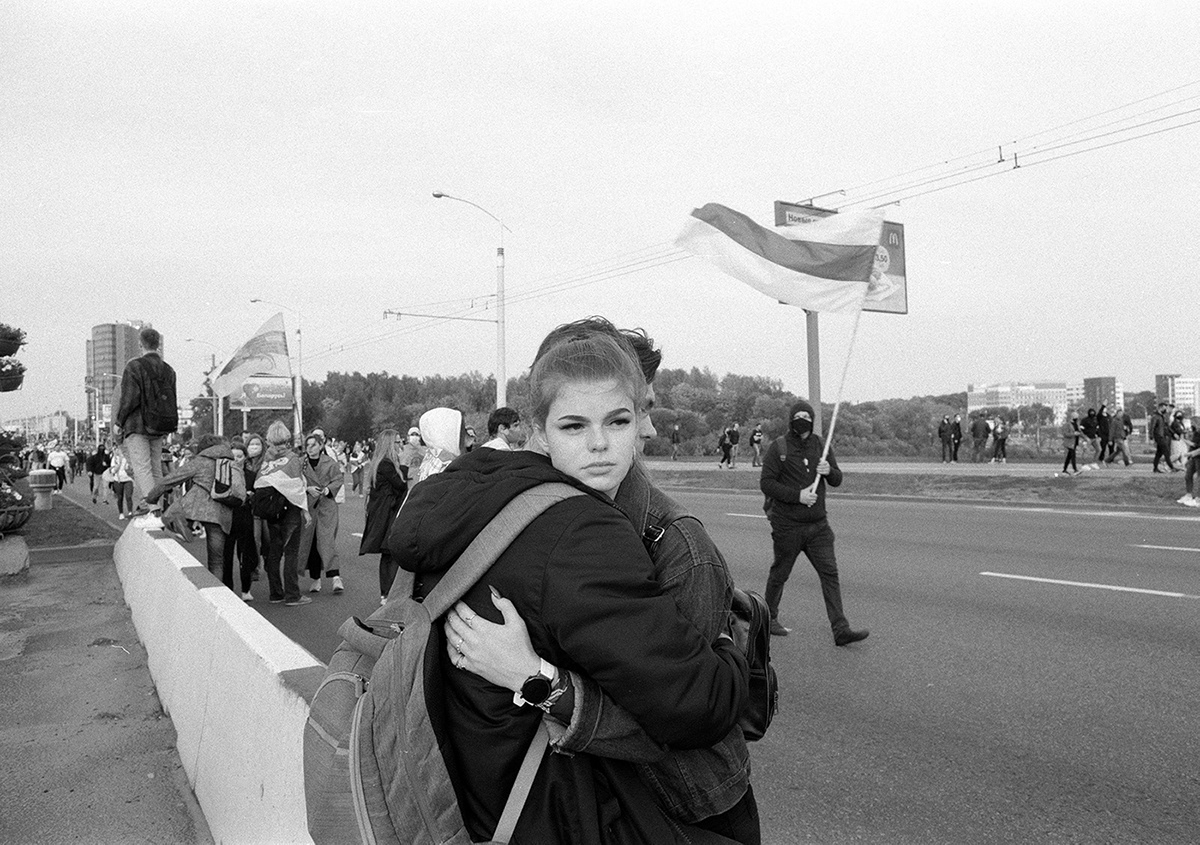
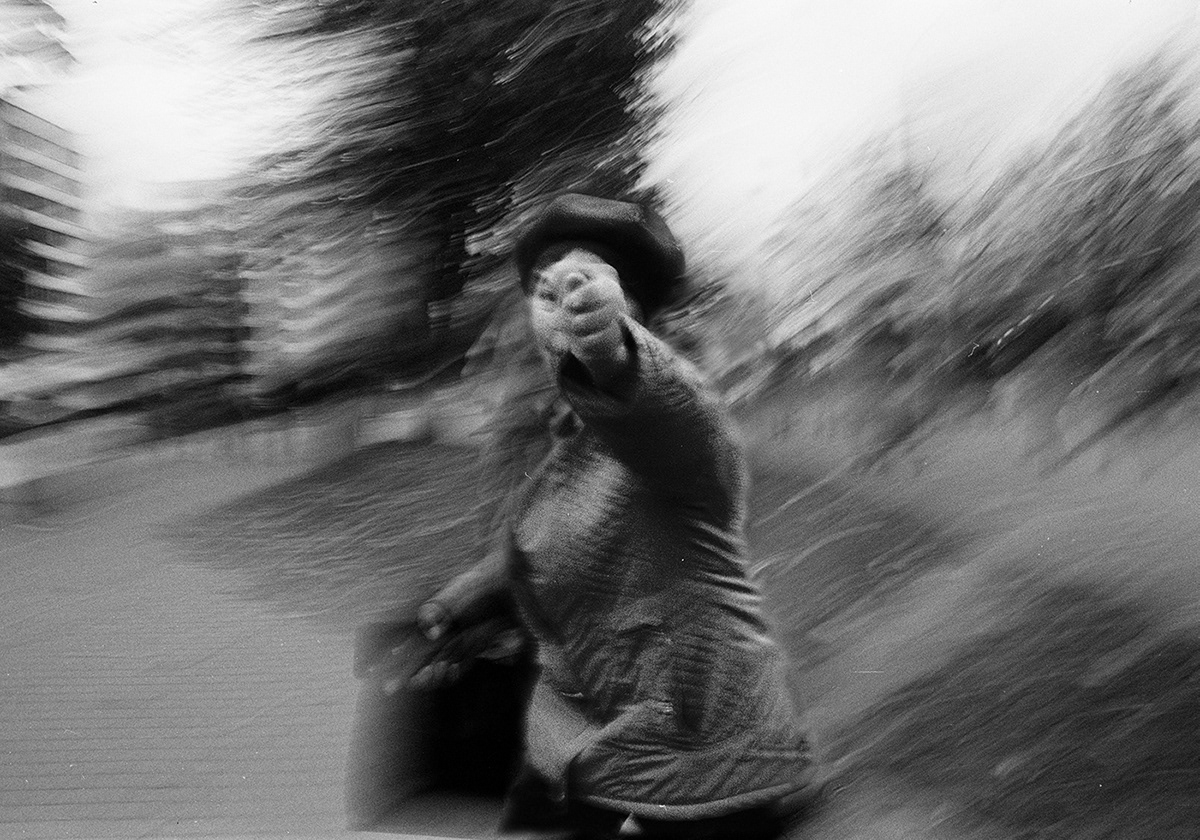
Publication of project photos in the media



Lublin exhibition, Poland

Performance "The Most Beautiful East. Photographic Memory"
Waynowski sits on a chair at the centre of the stage and talkes. In front of him lie peel-a-page calendars, scattered on the floor. A lot of them, it’s hard to count. Behind him, a wire fence. Wojciech Kaproń sits in a wire cage on the other side of the border. His choreographic action will be a simultaneous story – a translation, a reflection of words that can no longer be spoken, on the other side of the border. The stage is closed by a large screen with photos projected onto it. Documents, windows. Through them, one can look into the blurred, though not so distant, past. Waynowski sometimes zooms in on fragments of monochrome photographs that luckily escaped the hands of the militia. He explains that the officers did not see a threat in something as old and anachronistic as a film camera. The Belarusian protests based on new technologies. They relied on the IT industry. Film grain, clearly visible on Waynowski's enlarged photos, helps to see ghosts that tell us something – both people who are alive (carried by enthusiastic and hostile emotions) and people dead in life (invisible behind balaclavas and shields). The photographer who captured them on film, and remembered them, gives them a voice.
Dominik Gac
What is the purpose of the artistic rendering of the 2020 protests? Memory. Remembering not only what was, but also – and perhaps above all – what was to be. As long as the memory of them exists, there is hope what the people who were protesting against election rigging and repression wanted will come to be. It is important to record the crimes of Lukashenko’s regime in documentary form. So that in the future no one will say that what was done to those people is some kind of fantasy. That it is an artistic exaggeration and an overstatement. There is no exaggeration in the performance, only testimonies, and voices of those who have been ground by the repressive machine. Memory, not necessarily about ancestors, but about people who suffer in prisons, and whom we cannot help in any other way, but by remembering. How not to forget? It's best to write something down, for example in a calendar. There are as many peel-a-page calendars spread out on the floor, surrounding the photographer from all sides, as there are political prisoners in Belarus.













